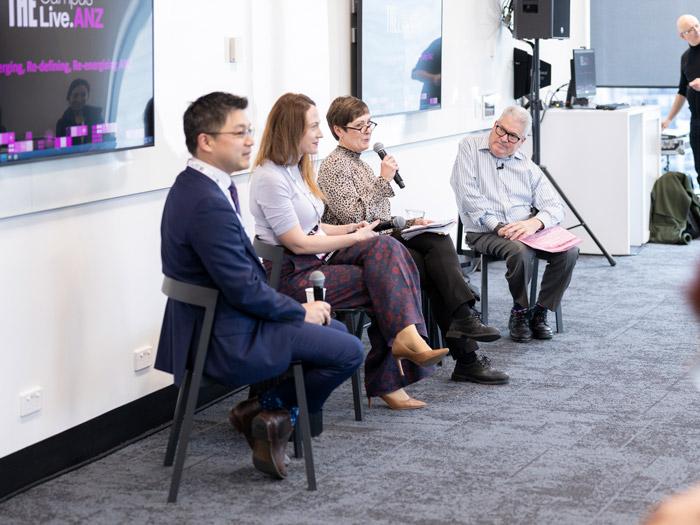So, you have a new initiative in mind which, if successful, will make a huge difference to people across your institution. And you think you’ve found the perfect external partner that will enable you to deliver it. How can you give your new partnership the best possible chance of succeeding? And how can you make sure it all stays on course as you hit the inevitable bumps in the road?
It starts with the right people
Making sure the right people are involved on both sides is crucial. Your partner should put its best foot forward, and you should do the same. It’s crucial that your project lead has the right experience – ideally, they will have delivered an initiative of similar scope and ambition before. They need to be senior enough to be a strategic thinker while also being a mover and shaker who can persuade others to join your cause. It is too much to expect someone without this experience to drive a project forward successfully; technical or operational experience are not enough by themselves.
- The three key building blocks for a successful knowledge transfer partnership
- How to foster a start-up mindset in your students
- Building blocks of university-industry partnerships for positive change
They also need to be used to managing strategic relationships courteously and professionally. This experience will naturally help them shroud your project in positivity and charge it with an entrepreneurial spirit. They will need to win hearts and minds within and beyond your institution, to secure buy-in where it matters and be brave enough to disregard the naysayers where it does not.
Their relationship management experience will allow them to distinguish mountains from molehills (that is, the really important problems from the really trivial ones) and to maintain a pragmatic dialogue with your partner. After all, the measure of the success of your partnership will be how you get through the challenging parts of the project – stuff will go wrong – and work towards solutions together rather than searching for blame.
Know what you are working towards together
A clear, shared sense of purpose will provide impetus and momentum for your project. Both sides should be able to suggest clear objectives, and it’s important to revisit and restate them regularly. The practical objectives you set together should link back to the strategic purposes of your project, so you do not lose sight of them: in the midst of a complex undertaking it can be easy to miss the wood for the trees.
Establishing a joint online project board early on, accessible at any time, can be a good, practical way of doing this. Likewise, measures of success should be agreed at the beginning. They should be realistic and achievable, and not so rigid that you cannot rejig or even jettison them when circumstances change and as new opportunities present themselves.
High-quality feedback
Providing your partner with regular, high-quality feedback is essential. “High-quality” here, in the partnership context, should be clear and actionable, supported by evidence, presented with context and delivered in manageable portions rather than as a summary judgement.
Your project lead will work with your external partner to understand how best to move your project forward by gathering insights from the people it is meant to benefit. How you ask questions of your stakeholders is important. An experienced project lead will avoid open formulations such as: “Do you like XXXX?” The responses to such questions run the risk of generating disproportionate negativity around your project and are all but useless for anything other than a limited “temperature check”. Pulling an initiative to pieces can be all too easy.
Instead, you should aim to ask a wide range of people for their suggestions regarding specific improvements to your endeavour and challenge them to consider your project road map. Engaging them in this way will lead to feedback that will positively influence your direction, help get stakeholders invested in your project and ensure your partner can do their bit to make your collaboration successful.
Communication is key
Maintaining a friendly, professional dialogue is important, too. A fortnightly, or more frequent, cadence of communication allows for timely action and fosters a sense of shared ownership. Waiting months between discussions, on the other hand, will likely mean that issues are stored up and left unaddressed, and the discourse runs the risk of being confrontational and unproductive. Likewise, sharing information before meetings and keeping to a transparent, pre-agreed agenda will ensure that both sides can meaningfully contribute to the conversation and make the best use of limited time together.
Rise to the challenge
Collaboration is opening up opportunities everywhere, from the funding agenda in HE, which has shaped a consortia-driven approach, to large organisations realising they can still be agile and keep ahead of their competition by working closely with a growing new player making waves in their sector.
The right partnership, managed well, will enhance your joint capability and capacity well beyond what would otherwise be achievable alone. If you’re considering working with an external partner, it is time to ask yourself: does your institution have ambition and aspire to make challenging things work while keeping eyes on the eventual prize? Or are you going to fall at the first hurdle? A great relationship with a compelling partner organisation will make the answer obvious. It’s time to make the dream work.
John Miles is founder and CEO of Inkpath. He built the first proof-of-concept prototype of Inkpath while at the University of Oxford, where he was training officer for the humanities division and a research associate at Wadham College.
If you found this interesting and want advice and insight from academics and university staff delivered direct to your inbox each week, sign up for the Campus newsletter.




comment